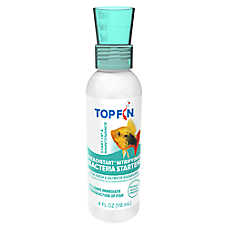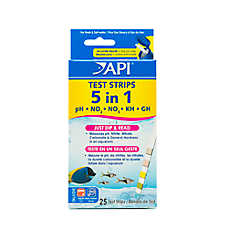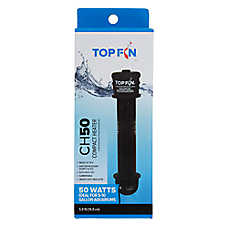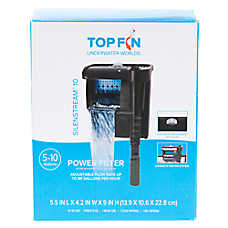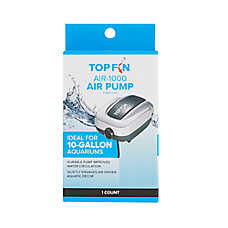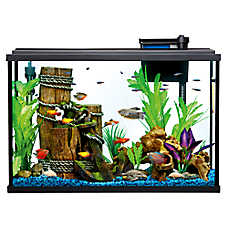Setting Up An Aquarium
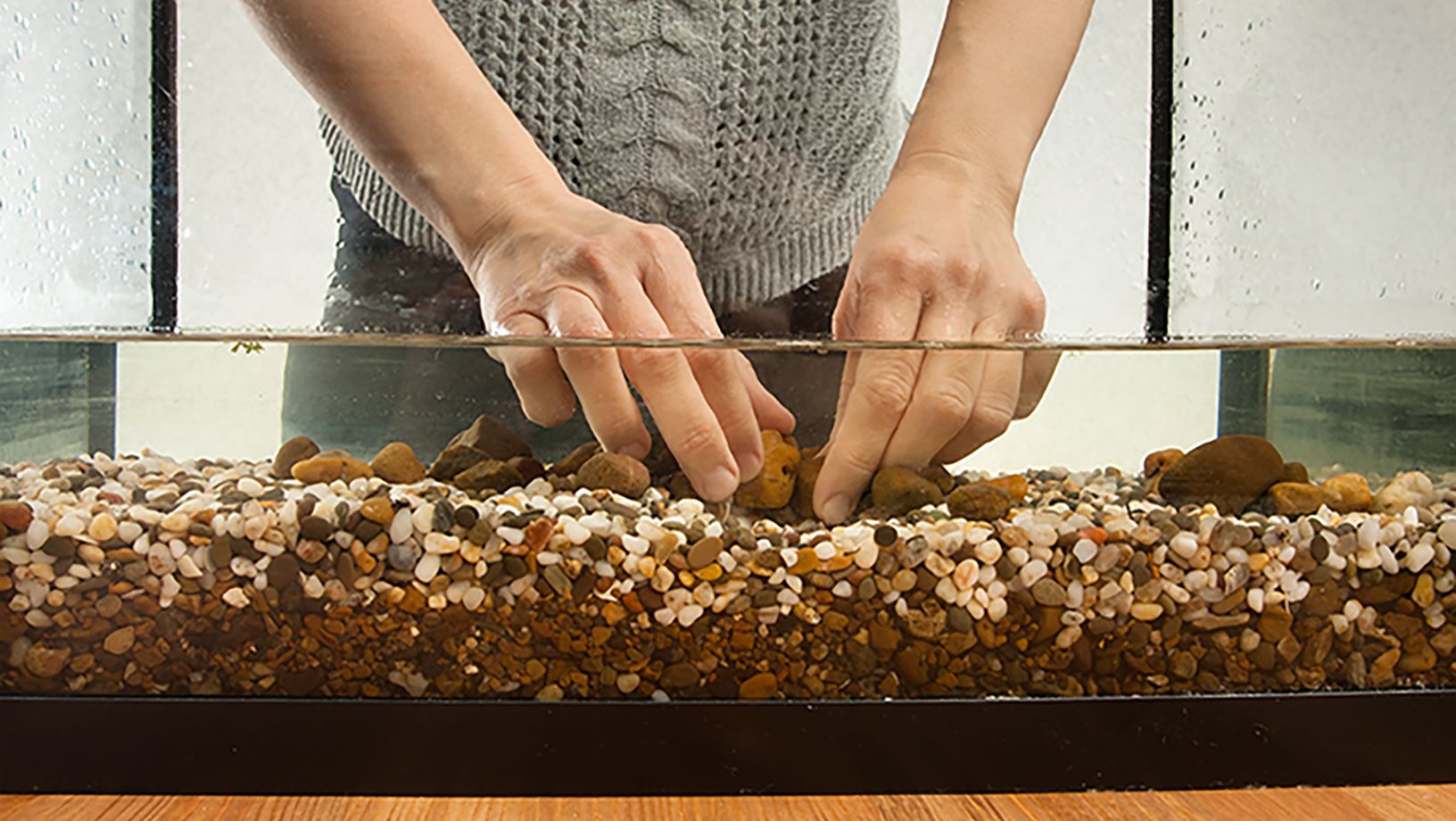
In this Article
Setting Up An Aquarium
Whether you are new to keeping fish or a seasoned fish keeper, setting up a new aquarium is always an exciting time! Before you head to the store, consider what you want from your tank. Are you excited about a particular fish and want to give it the perfect home? Do you have a specific space you want to have an aquarium in?
As you plan your new tank, consider the type of fish you want to keep, the space available, how much time you can commit to care, and whether you prefer live plants or decorative elements. Taking time to think through these details and research your fish will set you up for long-term success. Once you’ve settled on your tank size and occupants, it’s time to shop for your new set up.
Aquarium Setup
- Select the appropriate aquarium, substrate, decorations, filter and other equipment needed for the type of aquatic pet you want to keep. Ask a PetSmart associate for help.
- Before adding fish, take the tank home and set it up to make sure that all of the equipment is working properly, and the water temperature is stable.
- Water weighs 8.3 pounds per gallon. Set the tank on a surface or stand that can easily support the aquarium's weight when it's full of water.
- Thoroughly rinse the aquarium substrate with tap water to remove any dust and debris.
- Thoroughly rinse all decorations and ornaments with tap water. Never clean aquarium decorations with soap.
- Place rinsed substrate into the aquarium and then place the decorations and ornaments in desired locations.
- Add the appropriate amount of water conditioner to the aquarium and fill with tap water. If you have a water softener in your home, use a tap water source that bypasses the water softener.
- Connect all equipment (filters, heaters, thermometers, etc.) following the manufacturers' directions.
- Install aquarium tops and lights. The lights should be on for about 12 hours during the day. Make sure to turn off the lights at night. Use an automatic timer to keep a consistent schedule.
- After 24 hours, if all equipment is working properly and the desired temperature has been reached it is time to “cycle” your aquarium. (See below for more information)
For more information about water quality, check out our Aquarium Water Quality guide.
Cycling Your Aquarium
Aquariums rely on a variety of beneficial bacteria to keep the fish within safe and healthy. Fish make ammonia as a waste product of digestion. They release this into the water around them constantly. However, Ammonia is very toxic to a fish’s gills!
Fortunately, bacteria exist that convert Ammonia into Nitrite and then into Nitrate. Each step of the process makes a product that is less toxic to your fish with Nitrate being the least toxic. This is called the Nitrogen Cycle.
Cycling refers to the process of getting the Nitrogen Cycle up and running in a fish system. Cycling is one of the most important—and riskiest—steps when starting a new aquarium. There are two ways to cycle your new tank.
Fish-In Cycling:
This is the oldest way of cycling a system. This method is very stressful for these early fish and can be fatal if they are not monitored closely. Fish-In Cycling involves setting up your tank and adding only a few fish. Add 2-3 of the fish you want to keep to your new tank. Feed the fish lightly, only what they eat in 1-2 minutes, and perform water changes when ammonia is greater than 1.0ppm. Avoid adding an Ammonia Binding or Detoxifying chemical as that prevents the bacteria from getting established. Monitor your water quality parameters with a test strip or liquid test kit daily. First, ammonia levels will rise. As bacteria develop, nitrite levels will increase while ammonia begins to fall. Eventually, nitrite will also drop as nitrate levels rise - the final stage in the cycle. Your tank is fully cycled when there is 0ppm Nitrite and Ammonia and you have a Nitrate reading greater than 5ppm. Once your tank is fully cycled, you can add additional fish.
Fishless Cycling:
Fishless Cycling is a newer, fish-friendly method of starting an aquarium without exposing live fish to harmful ammonia and nitrite levels. To begin, set up your tank and add a small amount of fish food or ammonium chloride to introduce ammonia. Maintain ammonia levels between 1.5 and 5 ppm by continuing to add small amounts daily. As the cycle progresses, ammonia will rise and fall, followed by a spike in nitrite, which eventually converts to nitrate. Your tank is fully cycled when both ammonia and nitrite reach 0 ppm, and the system can process new ammonia (from food or ammonium chloride) back to 0 ppm within 24 hours. Once cycled, you can begin adding fish and plants gradually - adding too many at once can overwhelm your beneficial bacteria. Speeding Up a Cycle:
Beneficial Bacterial solutions can help kickstart a cycle in your new tank. If you have an existing aquarium, taking some of the filter media from your existing tank and adding it to your new tank can also speed up the process.
Maintaining Water Quality
The goal of every fish keeper is to provide a clean, safe aquarium that your aquatic pets will thrive in.
In a properly cycled aquarium, all organic waste will be converted into nitrates. As long as waste is being produced, the nitrate levels will continue to climb.
Regular partial water changes and filter maintenance should be done to maintain the nitrate levels at or below 20 ppm (mg/L). The amount of water changed, and the frequency of water changes, is determined by numerous factors.
For example, a large aquarium with 10 fish will take longer to reach nitrate levels of 20 ppm than a smaller aquarium with 10 identical fish. Therefore, the smaller aquarium will require more frequent partial water changes to maintain ideal nitrate levels.
When fish eat, they produce waste in the form of ammonia which is very toxic. Ammonia is converted by beneficial bacteria into nitrite which is also toxic to fish. The nitrite is then converted by a different species of beneficial bacteria into nitrate. This process is called nitrification. Nitrates are much less toxic and are only removed by regular partial water changes.
Regular water testing is essential to keeping your fish healthy and your aquarium stable. Purchase a good quality test kit so that you can regularly monitor your water quality and develop a schedule for your aquarium. Many aquariums require partial water changes weekly to maintain optimal water quality, but your results may vary depending on the aquarium size and aquatic pets that you choose. Not sure which fish can share the same water conditions? Check our Fish Compatibility Guide for guidance.
Water Parameter | Target Range |
Ammonia | 0ppm (mg/L) |
Nitrite | 0ppm (mg/L) |
Nitrate | Less than 20ppm |
pH | 6.5-8.3 |
Chlorine | 0ppm (mg/L) |
Alkalinity | 50-200ppm |
Adding fish to your aquarium
Before adding fish to a new aquarium, make sure there is no chlorine present in the water and that the aquarium is fully cycled from a fishless cycle. If using fish to cycle the aquarium, follow the tips for a successful cycling in the Aquarium Water Quality Care guide.
Not sure which species get along? Our Fish Compatibility Guide can help you choose compatible tank mates.
PetSmart offers free water testing and can verify your water parameters before you buy your new fish. It’s good practice to test your water anytime you add fish.
To acclimate fish to the aquarium:
- Turn off the aquarium lights to reduce stress on the new fish.
- Float the sealed bag of fish in the aquarium for 15 minutes. This will allow the temperature in the bag to adjust to the temperature in the aquarium.
- Using an aquarium net, gently scoop the fish out of the bag and place them into the aquarium. It's important to never add bag water to your aquarium.
- After an hour, it's safe to turn on the lights and lightly feed the new fish. Remove any uneaten food after 5 minutes.
- If you are adding new fish to an established aquarium that already has fish, it's recommended to have a separate fully cycled “quarantine” tank to keep the fish in for at least four weeks to ensure that they are healthy before introducing them into the aquarium they are intended for.
When should I test my water quality?
- Fish are sluggish, near the bottom of the tank
- Fish are at the top, breaking the water to breathe
- Fish are not eating
- Sudden behavior changes in your fish
- Water is cloudy
- Water smells funny
PetSmart offers free water quality testing and one of our knowledgeable associates can help you get your system balanced.
When should I contact a veterinarian?
Contact an aquatic veterinarian if you notice the following signs:
- Unusual swimming pattern
- Thinness or decreased appetite
- Abdominal swelling
- Inflamed or discolored skin/fins
- Fins clamped to sides of body
- Scraping body on rocks (flashing)
- Visible signs of illness or recent fish loss
If your fish show any of the signs above, we recommend using the “Find a Fish Vet” tool at fishvets.org or wavma.org to locate a qualified aquatic veterinarian in your area.
Shopping Checklist
What will I need to set up my aquarium?
- Glass or acrylic aquarium appropriately sized for species and number of fish
- Aquarium stand
- Aquarium hood with light fixture and bulbs
- Aquarium gravel and vacuum
- Filtration system (see PetSmart associate for the best solution for your aquarium)
- Aquarium heater and thermometer
- Water testing kit or strips
- Water conditioner/dechlorinator
- Beneficial bacteria starter
- Decorations and artificial or live plants
- Algae cleaning pad or scraper
Ready to learn more?
This guide is a great starting place, but we encourage you to do more research on the individual species that you are keeping so that you can be as successful as possible with your aquarium!


